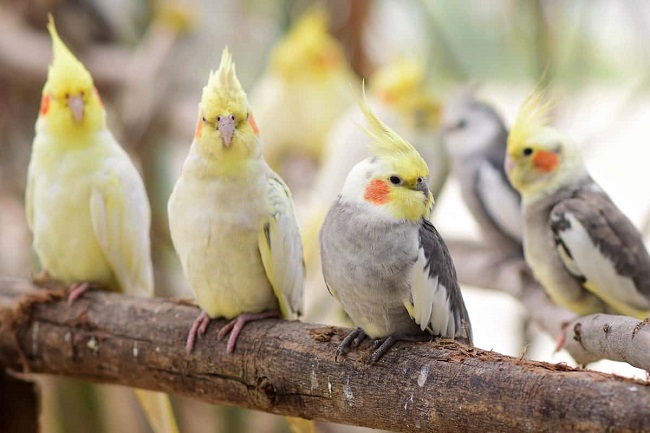Cockatiels, with their distinctive crests and playful personalities, are among the most popular pet birds worldwide.
Originating from Australia, these friendly and intelligent birds make wonderful companions. This article serves as a comprehensive guide to understanding and caring for Cockatiels.

Unraveling Cockatiel Traits
Here is some of the traits of Cockatiel:
Read Also:
Physical Traits
Adult Cockatiels typically measure 12-13 inches from head to tail, with a considerable part of their length due to their long tail feathers. The birds possess a distinguishing crest that expresses their emotional state. For instance, a straight-up crest may indicate surprise or excitement.
Color and Varieties
Wild Cockatiels are predominantly grey with flashy yellow faces and vibrant orange cheek patches. However, selective breeding in captivity has produced a wide range of color mutations, including lutino (yellow or white with red eyes), cinnamon, pearl, and many others.
Lifespan
With proper care, a healthy Cockatiel can live anywhere from 15-25 years, and sometimes even longer. Their longevity means owners are making a long-term commitment to their care.
Cockatiel Facts: More Than Meets the Eye
Cockatiels are known for their friendly and affectionate nature. They are social birds that enjoy companionship, whether it’s from their human caretakers or fellow birds.
Cockatiels are also known for their ability to mimic sounds. While they may not be as proficient as some parrot species, Cockatiels can learn to whistle tunes and mimic common household noises.
Interestingly, female Cockatiels are typically quieter and less vocal than their male counterparts, who are known for their charming, often comical, whistling serenades.
Comprehensive Cockatiel Care Guide
Here is the guide on care of Cockatiel:
Housing and Environment
Cockatiels need a large cage with ample space to fly and move around. The cage should have horizontal bars on at least two sides to encourage climbing and exploration. Equip the cage with a variety of perches of different diameters to promote foot health.
Diet
A balanced diet for a Cockatiel should consist of high-quality pellets, fresh fruits, vegetables, and a small portion of seeds. Avoid feeding them avocado, chocolate, or any caffeinated or alcoholic beverages, as these can be toxic to birds.
Socialization and Enrichment
Interaction and socialization are crucial for a Cockatiel’s wellbeing. Regular out-of-cage time, toys, and interaction with their human family members can help keep them mentally and physically stimulated.
Health and Wellness
Regular vet check-ups are vital to ensure your Cockatiel is healthy. Be mindful of signs of illness, such as changes in behavior, appetite, or droppings.
Read Also:
Conclusion
Caring for a Cockatiel is a rewarding experience, filled with charming whistles, affectionate companionship, and amusing antics. Their engaging personalities and manageable size make them an ideal pet for both beginner and experienced bird owners.
With proper care, commitment, and a lot of love, you can ensure your feathery friend lives a long, healthy, and happy life.
























